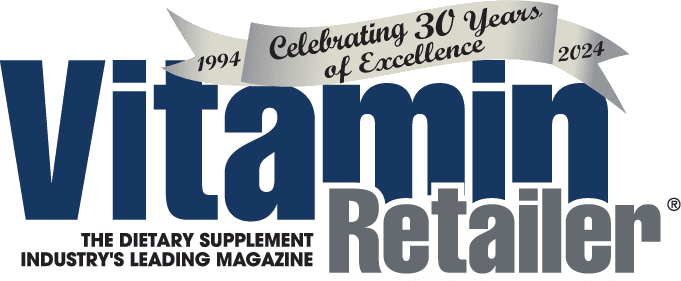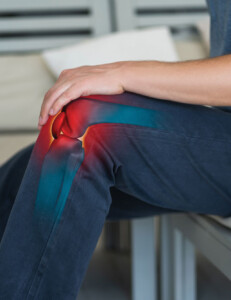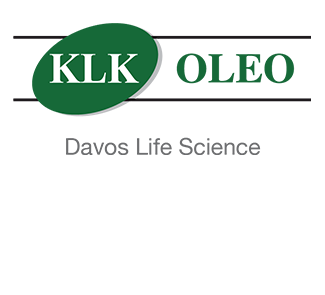An aging, overfed and undernourished population seeks effective, proven natural alternatives to maintain their mobility and shore up their foundations.
No one said getting old was easy, but it’s becoming infinitely harder when those aches and pains begin to affect everyday life. An even scarier proposition is posed when one isn’t feeling those aches and pains—when the body might be succumbing to a condition, such as osteoperosis, but the person isn’t aware of how dangerous their situation is becoming until it’s too late.
For instance, only perhaps one half of individuals with osteoporosis are aware of their condition, according to Dallas Clouatre, PhD, R&D consultant for California-based Jarrow Formulas, Inc. He cited the National Health and Nutrition Examination Survey (NHANES) that showed that only one percent of men and 11 percent of women over 65 reported that they had osteoporosis. However, bone mineral density (BMD) testing revealed that four percent of male and 26 percent of female survey takers actually had the disease. “The mismatch between perception and reality with regard to bone health gains importance from the fact that the number of individuals involved is huge,” he said.
Jeffrey Burke, ND, MH, educator and host of the Staying Healthy! Radio show for the Las Vegas, NV, retailer by the same name, cited the National Osteoporosis Foundation’s statistics that about one in two women and one in four men over age 50 will break a bone due to osteoporosis, and by 2020, half of all Americans over 50 are expected to have low bone density or osteoporosis. In addition, nearly half the American population over the age of 18 (about 48 percent) are affected by musculoskeletal (bone and joint) conditions, according to The Burden of Musculoskeletal Conditions in the United States.
“This is due to everything from dietary changes, to obesity, as well as living longer. I am a strong believer in minerals, as our soils have become so denatured. The past few decades have shown a decline in bone and joint health due to the unhealthy, mineralvacant diet we consume,” said Burke. “Today we are living longer and have an aged community growing every year. We are faced with a higher amount of stress, and with obesity on the rise, we are compromising our bones, and joints carry excess weight. Diet plays an integral role because as a nation we gravitate toward unhealthy choices, and although we consume plenty of calories, the quality of the nutrition of those calories leaves us overfed and undernourished.”
Estimates on joint health are as varied as with bone health, but it is clear that Americans suffer joint issues earlier than in the previous generation, likely due to Increased rates of obesity, and that rates of conditions such as arthritis increase with age. Centers for Disease Control and Prevention (CDC) statistics show 50 million Americans had joint concerns in 2007-09, an increase from 2003-05 (46 million). “Furthermore, this report found that 21 million adults (42 percent of adults with joint concerns) have activity limitations because of their joints. The number of adults with joint concerns is growing by one million per year,” said Susan Hazels Mitmesser, PhD, director of nutrition research with New Jersey-based Solgar Vitamin and Herb.
Dean Mosca, president of New Jersey-based ingredient supplier Proprietary Nutrition Inc. (PNI), offered an August 26, 2012 CDC report that estimated of the 50 million Americans diagnosed with some form of arthritis, the annual cost attributed would be $86.2 billion.
“Interesting related statistics include: Of all arthritis cases, 31.1 percent are obese, and 21.4 percent are overweight,” Mosca said. “Normal or underweight adults comprise 16.4 percent of cases. Also, the number of knee replacements performed due to arthritis numbered 454,652.”
A Growing Mobility-Seeking Market
According to Marge Roman, manager of Stay Healthy! Health Food Store in Las Vegas, NV, a large percentage of the store’s sales to the “non-supplement crowd” comes from those seeking relief from the physical distress caused by bone and joint ills. “Pain and discomfort bring many people in, along with the pain killer frustration. I think the consumer has realized that the doctor only offers pain killers or joint replacement, and more people are choosing to avoid that route,” she said.
While Jarrow’s Clouatre is quick to note there’s a large overlap between joint health products designed for seniors and those designed for athletes and weekend warriors, the sales of both bone and joint products are strong and are expected to remain so due to an aging population base. “Data on the natural channel for bone health products for 2011 showed growth in the range of 15 to 16 percent overall,” he said.
“The primary driver in the category remains the aging of the population as a whole leading to a steady increase in individuals reaching the age at which bone and joint problems become of greater concern,” Clouatre added. “A short-term effect may be continuing from the impact of the recession and its relation to the costs of formal medicine. In the U.S., the high cost of medical care coupled with the lack of universal care makes self-help via natural alternatives attractive.”
PNI’s Mosca noted that unlike bone health, where customers aren’t necessarily “feeling” degradation, the joint support market is one that is always invigorated. “[Joint health] is a condition that people feel; you cannot feel your bones weakening, until later if you suffer a fracture,” he said. “When the joint aches start and movement range is noticeably lesser, people reach for natural remedies/dietary supplements to address those issues. Our industry is not only innovative, but it anticipates the needs and desires of consumers, so in the joint category, you have beverages, chews, gummies as well as conventional pills.”
While bone and joint health might both be driven by the aging population, in Roman’s store, younger customers are actively looking into joint health. “I think they are of the mindset of prevention and protecting joints from future damage,” she said. “Inflammation is an area the customers are much more interested in along with pain relief. Luckily, packaging has improved and more information is available on the labels.”
Traditional Giving Way to Natural
For years the choice has been to visit a physician or pain management doctor, and then an orthopedic doctor, noted Burke. “Drugs including anti-inflammatories, over-the-counter analgesics and prescription pain medications have been the protocol. When you reached the point where the pain medications no longer worked, surgery was the eventual next step,” he said. “Natural products can offer great help with internal lubrication, bone density, creating a healthier joint and reducing inflammation. From natural joint support products and blends to topical creams for pain and internal anti-inflammatory supplements, the success rate is amazingly high.”
Some of the best sellers in Stay Healthy!’s bone-joint-inflammation category include the topical product Topricin from Topical BioMedics, Garden of Life Grow Bone and Hyalogic’s Hyaluronic Acid, which is a growing product, according to Roman. But one top seller she’s carried for some time is Jarrow Formulas’ Bone-Up.
Jarrow Formulas’ Bone-Up is based on bone-derived calcium, osseinhydroxyapatite complex (OHC), also sometimes referred to as microcrystalline hydroxyapatite, according to Clouatre. “This complex of hydroxyapatite calcium and protein (ossein) is isolated from bovine bone. Ossein is rich in proteins that stimulate bone growth: collagens, osteocalcin and growth factors (IGF-I,II, TGF-B, bone morphogenic protein),” he said, noting that this calcium source has been the subject of numerous studies1, and when compared to calcium alone in the form of calcium Carbonate, the ossein matrix provided an additional increase in BMD of at least one percent for total BMD and increases of up to five percent in vertebrae.
Aside from having multiple clinical trials proving its efficacy, the OHC found in Bone-Up and the company’s Ultra Bone-Up is special in that it releases calcium into the blood in the same manner as dietary sources of calcium. “This means few perturbations of the blood level of calcium, long lasting access to calcium for better uptake into the bones and no inappropriate actions on calcium-sensitive hormones,” said Clouatre.
In addition, Bone-Up is a comprehensive formula including boron, vitamins C, D3, K2 as natural MK-7, copper, magnesium, manganese, potassium and zinc. “Non-calcium nutrients play many roles in bone health,” Clouatre explained. “The trace mineral boron, for instance, has a part in estrogen metabolism. Potassium has been shown to reduce calcium loss from the body. Magnesium helps to keep calcium in the bones, where it belongs, rather than in the lining of the arteries, where it does not. Zinc stimulates bone formation and reduces bone resorption. Vitamin K maintains lumbar bone and reduces new fractures. Vitamin D, of course, is required for the regulation of absorption of calcium from the gut and then its use for maintaining bone calcium levels. And vitamin C, copper, manganese and glucosamine are all important for supporting the activities of the bone matrix, the most active site of bone repair.”
Finally, Bone-Up was tested at Ohio State University and demonstrated significant improvements in several markers of bone metabolism associated with improving bone health.2
Jarrow’s Bone-Up is also a leader of the joint health category at Tunies Natural Grocery and Vitamin Center, which has been serving the natural products industry through its Coral Springs, FL, location for more than 20 years. Catering to young families trying to eat and live healthily along with seniors doing the same, the store just opened its second location in Palm Beach Gardens in early March. And according to Marshall Chernoff, store manager of the flagship location, the bone and joint category has been one of the store’s largest.
“Bone and joint health products have always been a popular item since so many of us as we age start feeling the effects of aches and pains. As a member of the Baby Boomers, I see a lot of customers more than ever looking to get relief from their discomfort,” said Chernoff, noting that when it comes to bone products, the majority of women and some men as they age need protection from osteoporosis, and Jarrow Formulas’ Bone-Up is a top seller that addresses their needs.
When it comes to customers’ joint health concerns, another long-time supplier has introduced an impressive product. “Solgar, a company we have carried for more than 20 years, has come out with a new formula that has been very effective in dealing with joint support and increased mobility, called No.7, which shows improvement within seven days,” said Chernoff. “Both these products—Jarrow’s Bone-Up and Solgar’s No. 7—are leaders in our store giving many of our loyal customers comfort and relief.”
New ingredients such as UC-II undenatured collagen and 5- LOXIN Advanced, both found in Solgar No. 7 Vegetable Capsules, have really excited consumers, according to Mitmesser, who noted that 5-LOXIN Advanced shows improvement in joint comfort within seven days.* “This is based on two human studies of 5-LOXIN Advanced using subjective measures in which participants rated their joint health. In these studies, after seven days, improvement continued to be seen, including in biomarker analysis,” she said.
In addition to advanced and naturally sourced bio-activity of 5-LOXIN Advanced AKBA, UC-II undenatured (active, whole and complete) collagen and Ester-C, the product contains a complex of traditional pepper spices and botanicals, making it a standout in the market, according to Mitmesser.
“Solgar No. 7 works differently than glucosamine chondroitin. While traditional glucosamine formulas focus on cartilage support, Solgar No. 7 targets multiple pathways intended to balance the release of joint enzymes and structurally support collagen building blocks and sensitive joint cartilage,*” she said. “It is also intended to simultaneously support the body’s natural range of motion and joint flexibility.* It’s a winning product when one considers users see improvement in joint comfort within seven days* and all that’s needed is one easy-to-swallow capsule once daily.”
Ingredient Innovations
PNI’s Celadrin ingredient, which appears in a variety of recognized brand names including Natural Factors, NOW and Doctors Best (cream), was developed to address the inflammatory component that directly affects pain/discomfort and attendant mobility. “Some supplements help to lubricate the joints and reduce inflammation, such as Celadrin, which contains cetylated fatty acids. Research suggests it can help reduce joint pain and inflammation and improve mobility,” said Mosca.
Since 2001, a total of six clinical trials have been performed on Celadrin. For one example, research performed at the University of Connecticut involving 42 patients with osteoarthritis of the knee received either Celadrin applied topically or a placebo. The patients were evaluated before application of the cream and then 30 minutes after and then again following a 30-day treatment period where the cream was applied twice a day morning and evening. The researchers evaluated physical function, postural sway, pain and range of motion. Test of physical function included a timed assessment of how long it took to get up and go from a chair, stair Climbing, muscle strength and endurance, and mobility of the knee. The group receiving Celadrin had outstanding results with reduced pain and stiffness, improved balance and strength, and better mobility. “What was most exciting was that within 30 minutes of applying Celadrin, patients experienced a dramatic improvement in all aspects tested. No difference was noted in the ability to extend the leg between groups,” said Mosca, noting that the study’s results were published in The Journal of Rheumatology.
On the technology front, Norwegian ingredient supplier NattoPharma ASA evaluated the commercial landscape and K2 offerings in nutritional supplements and found them lacking. “Many of the existing products have allergens and contaminants such as soy and antifoaming agents as well as impurities carried over from the fermentation process which may result in less stable and less biologically active vitamin K2 product,” said Vladimir Badmaev, MD, PhD, NattoPharma ASA’s head of R&D.
The analysis of commercial landscape of vitamin K2 led to development of a product called MenaQ7Crystals. This new ingredient results from a proprietary multi-step process of purification, condensation and crystallization of fermentation- derived K2. “The resulting crystal form of vitamin K2 is a much more desirable outcome for the safety and efficacy of the end product that is more than 95 percent pure natural menaquinone-7 or MK2- 7, with less than 0.5 percent (traces) of menaquinone-6 (MK- 6) , a marker of natural menaquinone-7 technology,” said Badmaev, noting that MK-6 is not present in a synthetic MK-7 product. “The all-natural MenaQ7 crystals are also free of other menaquinones, e.g. MK-3, MK-4, MK-5, MK-8 etc., which is important for a higher rate of gastrointestinal absorption, bioavailability to target tissues (e.g. bone and blood vessels) and may also contribute to safety of K2.”
The pure MenaQ7Crystals will be used directly in foods, supplements and multivitamins without the customary excipients. “Consumers will enjoy this as tablets/capsules may be smaller, easier to swallow and potentially less expensive than other MK-7-containing supplements,” said Badmaev. “Additionally, consumers love the concept of ‘purity,’ which is an attribute they seek in all their products, especially ingestibles. Many more consumers are discovering they have problems with gluten and soy. Many more now identify as vegans/vegetarians. Others consume only kosher or halal. And still, more are reaching for organic. The soyfree technology of Menaq7Crystals and ‘crystal’ purity of its natural menaquinone-7 provides a solution for the growing demand for safety, reliability and purity of natural products.”
At press time, several brand partners in the U.S. and Europe have begun working with the ingredient and several product launches are imminent, according to the company.
Retailer Tips
Bone and joint health is yet another area where the adage, “use it or lose it,” is the best advice, according to Burke. “Retailers should also have literature available on healthy diet, exercise and healthy living to remind customers that lifestyle changes are a large part of getting healthy, and supplements alone, although important are the tools for success,” he said, noting that retailers should always make sure that customers keep physicians aware of their nutritional choices, to make sure there are no counter indications with what the doctors may be prescribing.
“Have your customers inform you as to how they are feeling, what they have tried both natural and pharmaceutical. Our industry offers wonderful choices, and there are different protocols for each customer. Make sure to listen, it will help you narrow down and pinpoint and suggest a quality program,” Burke added. “Our country is aging at an alarming rate, and preventative health, before we experience problems, may be our life-saving grace.
These statements have not been evaluated by the Food and Drug Administration. These products are not intended to diagnose, treat, cure or prevent disease.
References:
1 For a summary of 18 comparative OHC studies, see Menopause, 2009. 16(5): p. 984-91.
2 Robert A. Disilvestro; Bethany Crawford; Wenyi Zhang; Sid Shastri. “Effects of micronutrient supplementation plus resistance exercise training on bone metabolism markers in young adult woman.” Journal of Nutritional & Environmental Medicine, Vol.16, Issue 1 February 2007, pp 26-32.




![[Sponsored Video] Special Report: Bergamonte®, the Untold Story](https://vitaminretailer.com/wp-content/uploads/2023/06/sponsored-video-special-report-b-300x169-1707947265.jpg)







